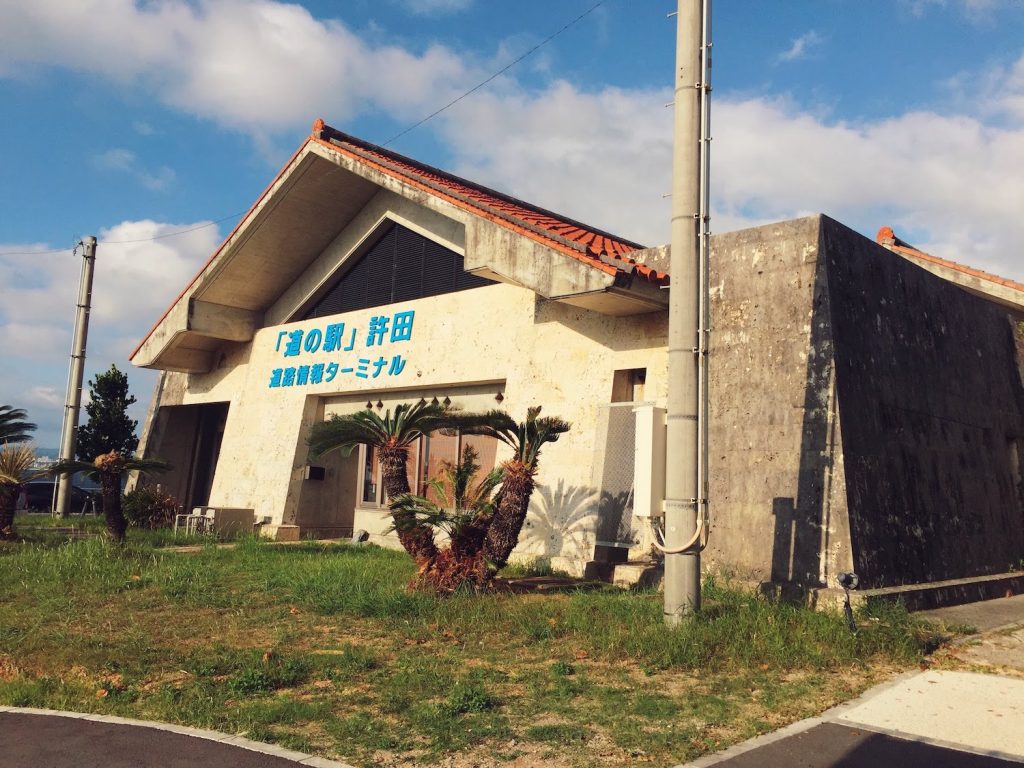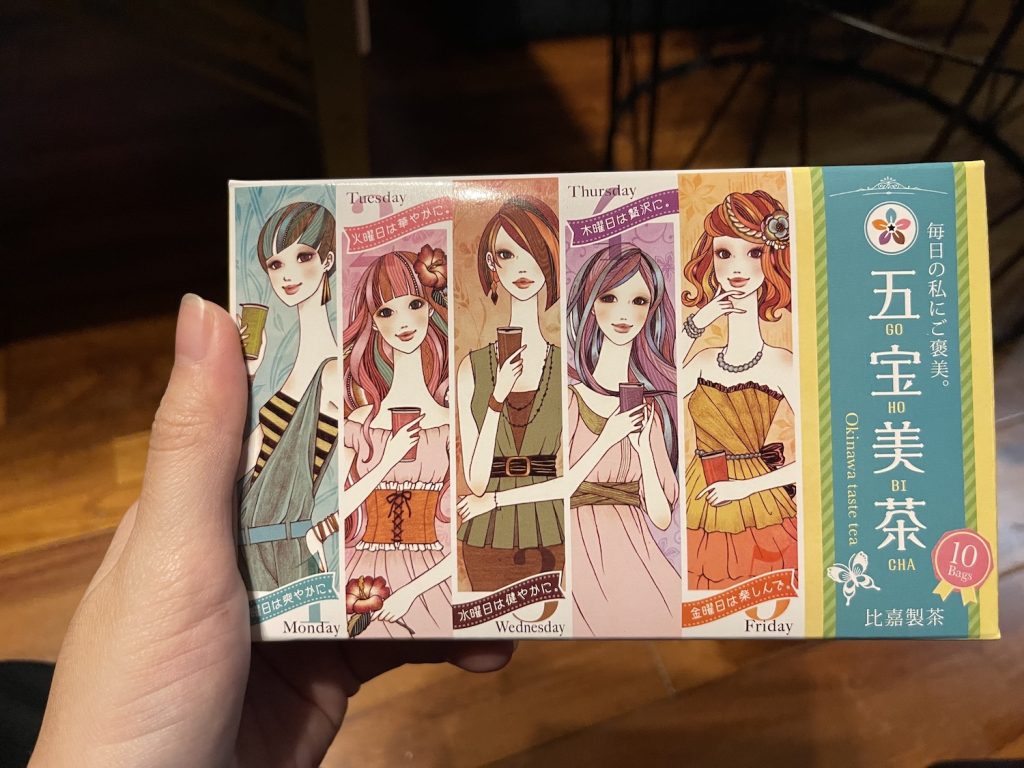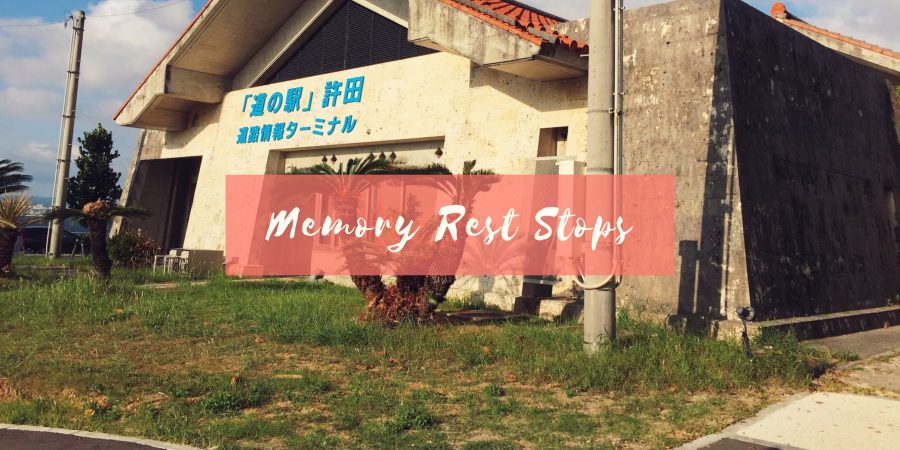While I can confidently say that on the whole, this trip to Okinawa was a success, there is one thing tha I wish I did differently. I really would have liked to stop by more Michi no Eki. Michi no Eki is literally translated as “The station for roads”, though in my mind the Japanese sounds a little more poetic and refers to a highway stop. You wouldn’t think that these are a big deal, but digging back through my internet memories, Michi no Eki were a big enough deal on my maiden voyage to Okinawa that I wrote about them.
My fascination with these stops come from where else but Japanese reality shows. The first Japanese show that caught my attention was Japan Hour, which was on every week on ChannelNewsAsia and the main reason why my brother and I remember a bunch of random commercial taglines. What I loved about the show was how it made travelling around Japan, enjoying the onsen, and eating different food seem so appealing.
And then, and I don’t remember how, by 2017 I was apparently so inspired by a show where two women drove around Japan to visit various Michi no Eki that when planning my trip to Okinawa, I visited a bunch of different websites to find the rankings for the Okinawan Michi no Eki.
In fact, I did the same googling in 2023 when I was planning this 2024 trip but the difference between then and now is that I was unable to find the sites as useful as I did back then. I also made the mistake of thinking that because we were going to be driving for the whole trip, I didn’t need to plan any stops to a Michi no Eki because we would naturally be driving past there.
I was wrong about that. Because we stuck mostly to the smaller roads, we ended up not going on any highways nor going near most of the Michi no Eki except for the Kyoda stop. At least, I think it was the Kyoda stop; I have been scrutinising Google Maps to look at the possible locations (and photos from other users) and that seems like the most likely one.

Incidentally, my sister and I did visit the Kyoda stop in 2017. We went there for dinner and we definitely explored much more than this time, though I probably bought more things in my second visit. If you’re planning a driving trip around Okinawa, you should probably know that rest stops not only sell omiyage for you to buy back, but also has very good food and even discounted tickets for attractions like Churaumi Aquarium (note: I’m not sure about all rest stops but it’s definitely available at Kyoda).
While we did not buy any food on this trip, I ate quite a bit from rest stops on my maiden trip to Okinawa. At Kyoda, I had a fried fish set meal which I loved; the fish was incredibly juicy and flavourful, the portion size was more than what I expected, and the miso soup was quite unique – a bit like a seaweed soup that I had at other places in Okinawa but with noodles inside. And with the rice, soup, fish, and accompanying salad all going for the price of 600 yen*, I thought it was incredibly value for money.
The other Michi no Eki meal I had was at the Yuiyuikunigami rest area, which my sister and I visited on the way to Kouri Island. My sister got a gyudon almost the size of her head for 500 yen and I had a inobuta jiru teishoku (boar soup set) for 600 yen. The rice was probably three scoops of rice because the lady at the stall did not hear my request for less rice so as you can tell, the portion was huge. Needless to say, neither of us could finish the meal, though that didn’t stop us from going to their cafe and picking up some delicious cream puffs, sweet potato tarts, and cheesecakes.

If you’re familiar with Okinawa, you may have realised that the food is quite closely connected to the geography of the Michi no Eki. Kyoda rest area is next to the ocean while Yuiyuikunigumi rest area is in the Kunigumi district in the north of Okinawa, where wild boars live. And of course, Okinawa is famous for their sweet potato. This is all by design, Michi no Eki are meant to provide not just a place for travellers to stop and rest, but to encourage local residents in the area to come up with products that are representative of their town and thus strengthen the local identity of the place. Learning this on my second trip to Okinawa helped me realise why I could see a mini-exhibition on the wildlife and traditional objects in the Yuiyuikunigumi rest area all those years back! According to Eric C. Rath**, Michi no Eki have been successful enough to gain the attention of the World Bank, which promotes the concept as a mdel of community economy growth in developing countries.
All this makes me feel great about the amount that Nic, Bekah, and I spent when we went to Kyoda. I have to admit, what they have is tempting and we bought so much. Unlike the last time, I did not actually buy clothes (I am a sucker when it comes to friendly store assistants) but I did buy a two week “Gohobi” tea set. It’s a pun on the word ご褒美, which means to treat yourself (also mentioned in Que Sera Sera, which I’ve now dubbed my Okinawan theme son). The tea packet uses the kanji 五宝美, which is a homonym and means “five treasures beauty”. In other words, there are five types of teas in this box, including sanpin cha which is an Okinawan tea and each tea is meant to be drunk on a weekday. This is literally a tea for you to treat yourself with during the work week and I had a lot of fun drinking this in the office.

In fact, as I’m writing this, I’m drinking the Rooibos and Hibiscus tisane from the set. Rooibos isn’t connected to Okinawa but the hibiscus, which is the more dominant flavour, definitely is. Hibiscus is well-suited to Okinawa’s climate and thus is planted widely across the island, helping to create its tropical image with visitors. It also reminds me about my first departure from Okinawa – I was waiting for the flight back to Fukuoka when I chanced upon some hibiscus tisane (which I bought). Around the time of that purchase, I also had a job interview over the phone and I remember how nervous I was and how I was utterly certain that I had messed it up. By now, the details of how the hall was (I think it was fairly sparse since it was a domestic budget flight) or the exact details of the interview are fuzzy, but I do remember the mix of emotions that I had in the terminal when drinking the tisane.
As you can see, each cup turned out to be a spark that got me thinking about both my Okinawan trips, though I did realise that I have scattered my memories. Some memories are in songs, some are in photos, and a surprisingly large portion have been written down both on this blog and on a microblogging app. It was a fun journey to go searching through these virtual memory logs in order to unearth little gems from the past so that I could write this piece. It’s also motivating me to continue writing things down, but also to think about how I’m going to keep everything so that I can find it easily.
*Note: I should mention that these are 2017 prices and Japan has actually experienced inflation in the past couple of years so I don’t know how true they are. But I wanted to write the prices down to give you a sense of how cheap they were.
** Note: Eric C. Rath’s book was on the history and definition of Japanese cuisine and while it doesn’t cover Okinawan cuisine, it’s worth a read if you’re interested in Japanese culture.
Rath, Eric C. Japan’s cuisines: food, place and identity. Reaktion Books, 2016.
